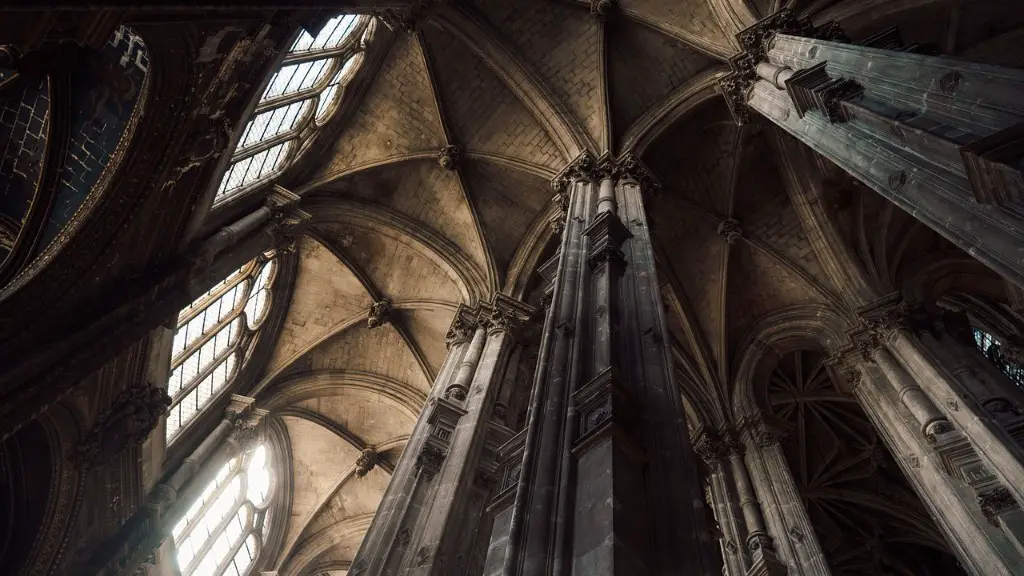Why is Classical Architecture Important?
Classical architecture is one of the oldest architectural styles in history and dates back to ancient Greece and Rome. Despite its long history, classical architecture remains a popular choice for modern builders, especially for its timeless elegance and chic sophistication. Those who study architecture quickly discover that classical design principles are some of the most important for creating beautiful and functional structures. In this article, we’ll explore why classical architecture is so important and how it is evolving with modern needs.
The classical style of architecture has been popular for centuries because of its sophisticated design principles that are based on mathematical proportions and mathematical precision. The foundations of classical design lie in the aesthetic concept of ‘The Golden Ratio’, which is an ancient mathematical ratio created by the Greek mathematician, Euclid. This design principle has been used in architecture for centuries and can be seen in the most classic and recognizable buildings, such as the Parthenon in Athens and the Duomo in Florence.
Classical architecture also often inspired by ancient Greek, Roman and Renaissance art and ornamentation. This is visible in the design of classic Greek and Roman structures such as the Parthenon and the Colosseum, which feature ornamental columns and pediments. Greek and Roman ornamentation is also used in the decoration of doors and windows, as well as decorative friezes, sculptures and mosaics.
The main objectives of classical architecture are to create a strong, symmetrical structure and to provide a sense of harmony and balance, which is achieved through the use of columns, entablatures, lintels and arches. These elements ensure that the structure is aesthetically pleasing and at the same time stable and safe.
These features can be seen in many of the world’s most impressive buildings, such as the Roman Colosseum, the Pantheon in Rome and the Parthenon in Athens. Even though these structures were created thousands of years ago, they remain timeless pieces of art that serve as a source of inspiration and admiration for modern architects.
Another important aspect of classical architecture is the fact that it is modular and flexible. This means that it can be adapted to fit different spaces and requirements, making it perfect for use in modern construction. Despite its antiquity, the timeless and elegant look of classical design is just as popular today.
Finally, classical architecture is also considered to be more sustainable than some more modern designs. This is because it uses fewer materials and is able to withstand the elements better. The materials used in classical structures, such as marble and limestone, are long-lasting and durable.
Classical Architecture and Modern Needs
As mentioned, classical architecture remains a popular choice for modern construction due to its timeless elegance and flexibility. It is able to blend with modern needs while retaining its classical beauty. In fact, many modern buildings are designed with classical elements, such as columns and arches.
These elements are often combined with more current materials and design features to create a unique look. For example, some modern buildings may feature ornamental columns and arches combined with steel beams and glass walls. This enables architects to create a timeless, yet modern look that stands out from the crowd.
There are also many modern buildings that feature classical elements, but with a more contemporary twist. For example, there are many buildings that feature modern technology combined with classic architectural elements. For instance, some modern buildings may feature classical elements such as columns, but the columns may be constructed from modern materials such as steel or concrete.
At the same time, classical principles are still being used in modern construction. The same mathematical proportions and design principles are being applied to modern structures, ensuring that they are aesthetically pleasing and structurally sound. As such, it is safe to say that classical architecture still plays an important role in modern construction.
Conclusion
In conclusion, classical architecture is an important and timeless style of architecture that has been in use for centuries. It is considered to be a source of inspiration for modern architects, thanks to the timeless elegance and sophisticated design principles that are used in its construction. The fact that it can be adapted to fit contemporary needs means that it is still a popular choice for modern builders, who often combine it with modern materials and design features to create unique and stunning buildings.
Modern Applications of Classical Architecture
Modern architects and builders are finding unique and innovative ways to use classical principles and features in their buildings. For example, there are many buildings which feature modern technology combined with classic architectural elements, such as columns and arches. This enables architects to create a timeless yet modern look that stands out from the crowd.
Another popular use of classical principles is in the design of commercial buildings such as shopping malls, hotels or office buildings. For instance, many modern malls feature a classical façade, which instantly makes them stand out from the crowd. The same applies to modern hotels and office buildings, which often feature ornamental columns and arches.
Classical design is also commonly seen in modern residential buildings. For example, many modern apartment blocks feature ornamental columns and arches to give them a touch of timeless elegance. Similarly, many modern homes have taken on classical elements, such as ornamental columns and arches, to give them a more distinct aesthetic.
Overall, classical principles and features remain popular in modern architecture due to their timeless elegance and sophisticated design principles. This means that classical architecture still plays an important role in modern construction and is used in many unique and innovative ways.
Preservation of Classical Structures
The importance of classical architecture cannot be overstated and it is the responsibility of governments, organizations and individuals to ensure the preservation of these timeless structures. Governments should ensure that heritage buildings are properly maintained and protected and organizations should raise awareness about the importance of these structures.
Individuals can also contribute to the preservation of these structures by visiting them, taking part in activities such as restoration projects or donating to organizations that specialize in the preservation of classical structures. Additionally, individuals can also raise awareness about the importance of classical architecture by sharing historic photographs and stories.
Furthermore, organizations such as UNESCO have taken steps to preserve and protect these buildings, such as listing them as World Heritage Sites. This gives them an added layer of protection and helps to ensure that they are maintained and preserved for future generations.
Education about Classical Architecture
In addition to preserving these structures, it is also important to ensure that future generations are educated about classical architecture. This can be done by incorporating classical architecture into architectural curriculums and teaching students about the importance of this style of architecture.
At the same time, organizations can also organize educational tours or lectures to raise awareness about the importance of classical architecture. Schools and universities can also organize such educational events to engage students and give them an appreciation of classical architecture.
Finally, individuals can also contribute to the education about classical architecture by sharing stories and photographs of these timeless structures. This helps to spread knowledge about the importance of these structures and fosters a newfound appreciation for their beauty and sophistication.
Conclusion
Classical architecture is an important and timeless style of architecture that has been in use for centuries. Despite its antiquity, it remains popular in modern construction due to its timeless elegance and flexible design principles. It is also more sustainable than some more modern designs, and its timeless features mean that it is still a popular choice for modern builders and architects. Finally, it is important to preserve and educate future generations about classical architecture in order to ensure that it is appreciated and maintained for future generations.





